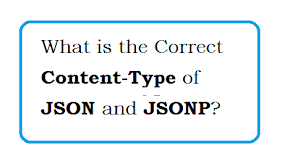

- Php json decode billing play receipt android verification upgrade#
- Php json decode billing play receipt android verification full#
- Php json decode billing play receipt android verification registration#
- Php json decode billing play receipt android verification trial#
Next, we need to enable IPN and set up PayPal to ping our listener. It might also be nice to send a receipt to the user, but I'll leave that up to you. We also log any errors using Laravel's Log class. We then set the subscription level based on the transaction amount and store it in the database. In this code, we first decode the JSON passed to our custom field, giving us easy access to the user ID. From here we can process our data: $listener = new IpnListener() Don't forget that PayPal will POST to this URL so if you're using HTTP/REST verbs, set it up accordingly. I called my file ipn.php, and I'll map it to /ipn. With Laravel, we can place the class into our libraries folder, making it autoload for us.Ĭreate a new controller or route and add the following code: $listener = new IpnListener() We'll use the IpnListener class to quickly verify the data, and we can then process this to insert it into our database.

Luckily we don't have to reinvent the wheel thanks to this handy class. The listener validates the data, inserts it into our payments table, and sets the subscription level of the user. In order to take advantage of IPN, we need to create an IPN listener for our application. PayPal provides a simple solution for notifying us when a payment has been processed they call it Instant Payment Notifications (IPN).

I've also gone ahead and created the model that will allow us to interact with the payments table. I'm going to set this as an integer to allow for multiple levels: one, two, and three to unlock additional features. created_at: We'll use this to see when the transaction is completed and start the subscription.Īlso, add a subscription column to your user table.paypal_id: The PayPal Profile ID which we'll need to handle cancellations later on.user_id: We'll use this to setup our relationship to the user table, an integer will do.txn_id: Our transaction id that PayPal will give us.id: An auto-increment integer and our primary key.Let's create it with the following columns: We first need to set up our payments table, where we'll store our transactions.
Php json decode billing play receipt android verification full#
Auth::user()->id))}}">īe sure to check out the full list of accepted HTML variables. So I'm going to use a JSON structure, allowing us to pass additional information should we need to.

Thankfully, PayPal provides a custom field that we can use to pass the user's ID. So we need to pass the user's ID from our application to PayPal. This isn't foolproof, however, because many people use different email addresses. The easiest way to do this is to match the email address of the PayPal transaction to the email account used to sign in to our application. Passing Additional InformationĪs we're linking subscriptions to accounts, we'll need to know who makes a payment.
Php json decode billing play receipt android verification upgrade#
We're going to allow users to sign up for a free account and then upgrade later on.Ĭreate your button and copy the generated code you'll use it in your application. I recommend leaving the "Have PayPal create user names and passwords for customers" box unchecked and select the "Use my secure merchant account ID" option. Be sure to fill out the rest of the information. Then look for the PayPal Buttons section and select Subscriptions from the drop down list.
Php json decode billing play receipt android verification trial#
You can also setup a trial period and let PayPal create the user account when they ping your server.įirst, login to your PayPal account and navigate to Profile -> My Selling Preferences. Subscription buttons allow you to set the billing amount, as well as the recurring payment time period. Today, we'll look at the subscribe button. PayPal offers several types of buttons that we can use, including: Buy Now, Subscribe, and Automatic Billing. It's free, but you must have a business account in order to implement subscription payments on your site. PayPal provides a custom field that we can use to pass the user's ID.īefore we begin, ensure you have a PayPal business account. Step 1: Setting Up Your Subscription Buttons
Php json decode billing play receipt android verification registration#
I'm starting with a barebones Laravel app with simple registration and login, and we'll add in the components we need to introduce subscription payments as we proceed through the tutorial. Once we complete the sign-up component, we'll look at the cancellation process via PayPal's API. We'll setup PayPal to accept subscription payments and configure our instant payment notification (IPN) listener. Note: I'm using Laravel in this tutorial, but you can apply these concepts to other languages and frameworks.


 0 kommentar(er)
0 kommentar(er)
